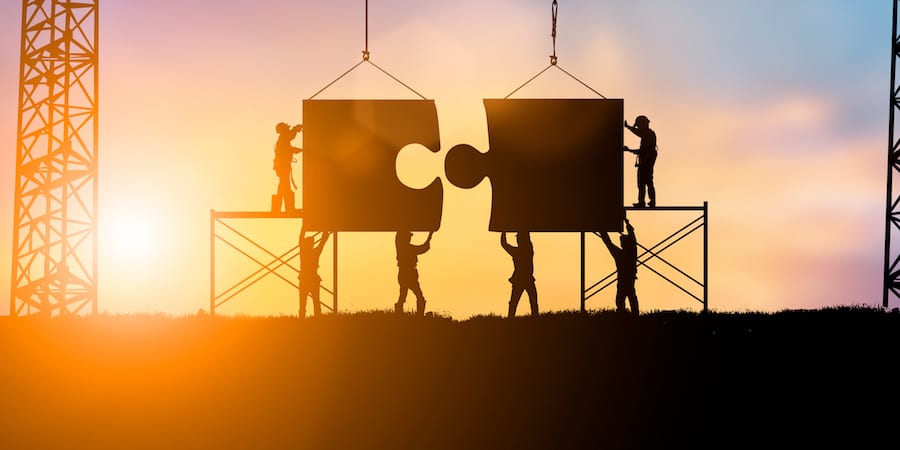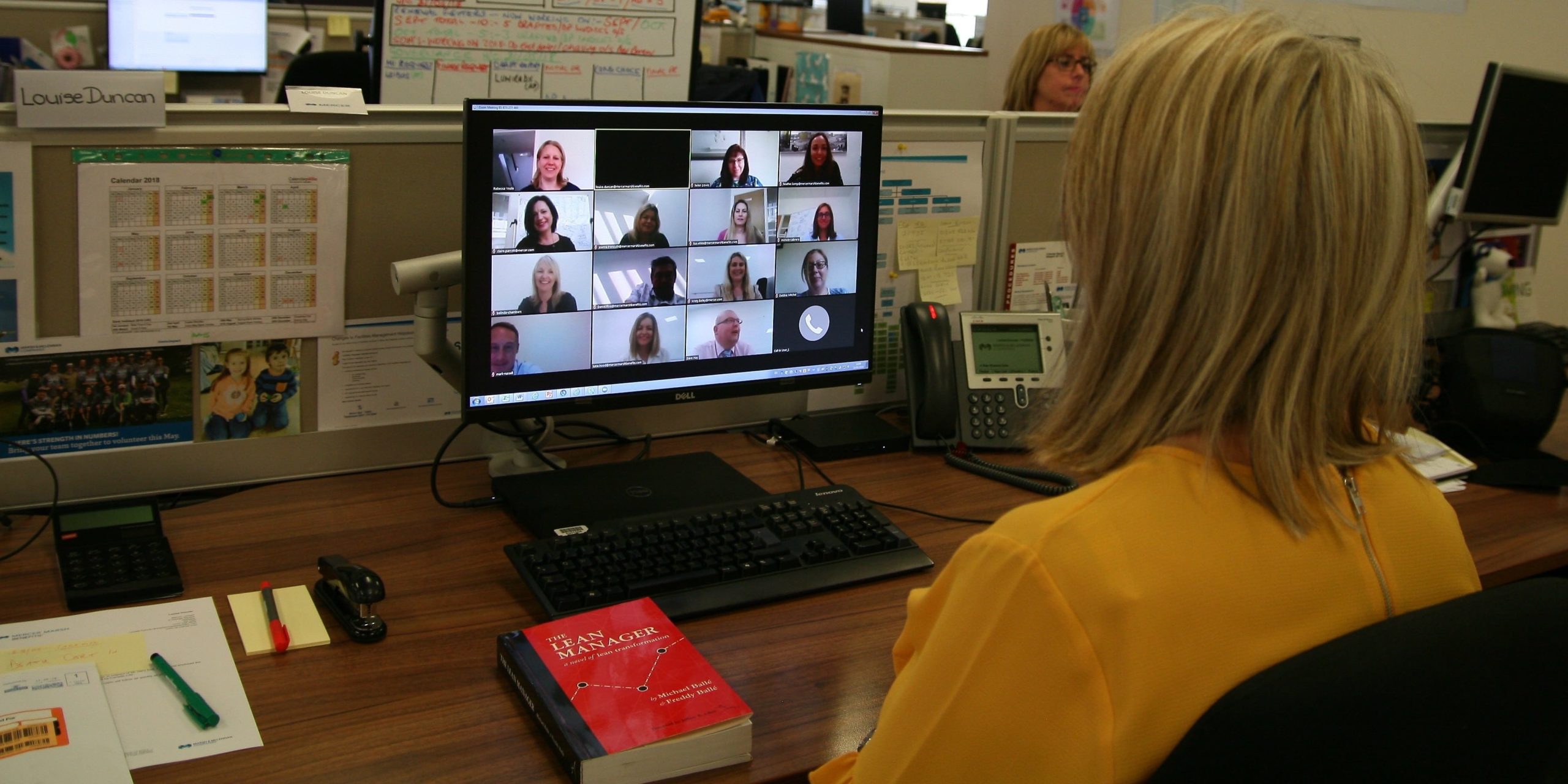
Overcoming structural racism with lean leadership
FEATURE – Can behaviors inspired by lean leadership help us to push back against our society’s ingrained racial bias? Our Brazilian colleagues discuss.
Words: Robson Gouveia and Tamiris Masetto Manzano, Lean Institute Brasil.
Photo credit: Johnny Silvercloud / Shutterstock.com
The images of absurd police brutality that have filled the news in recent weeks have brought together large swathes of our society in the fight against racial paradigms that are deeply rooted in our culture. Cases like George Floyd’s are not new and are far from being exceptions (in fact, they are only a small part of the problem of systemic racism) and it’s not the first time we witness public outcry, protests and vows to change the “system” once and for all. Yet, every time, after a few weeks people seem to forget about the problem. In reflecting on these past failures, we have an opportunity to do our part to keep the debate alive and try to effect change in the world so as to ensure diversity and inclusion for all. Isn’t it about time we really changed things?
Things aren’t much better her in Brazil. This is a country in which the majority of the population is non-white, with approximately 55% of Brazilians considering themselves as “black” or “mixed-race”. Despite this, what we see in organization – and in leadership positions – is an overwhelmingly homogeneous white male majority. Top managers often flaunt reports showing the diversity of their organizations, but just attend a leadership meeting and you likely won’t find a single black person sitting at the table. Black people seem to be relegated to service positions (a role that society has defined for them), not leadership ones.
In fact, it’s so unusual to see black people in leadership positions in Brazilian organizations that, when it does happen, it often causes disbelief. During a recent webinar, Deives Rezende Filho, founder of Condurú Coaching Executivo, shared with us his experience of being invited to work in a large Brazilian bank a few years ago. Upon entering the President's office for the first time, Deives caused some fuss. The President could not understand what Deives was doing in his office and, without even asking him to sit down, enquired whether he was there to fix the air conditioner. Deives then explained he had been invited to work at the bank and only after five minutes of awkward conversation did the confused President understood.
Deives’ story represents the reality in which we live. The situation becomes even direr when it comes to black women. Being a woman in Brazilian business immediately puts you at a disadvantage: research shows that only 1.6% of Brazilian managers are women. Roberta Anchieta, a manager at Itaú Unibanco, has many interesting stories to tell about what it is like to be a black woman in a leadership meeting – like for example the fact that people tend to look at her gender and skin color before they look at her skills set.
Black women like Roberta have a few extra steps to take in order to prove their worth, before people can see them the same way as their male colleagues. First, they need to prove they speak Portuguese and English well, which is surprising to most people as it seems to go against deeply rooted stereotypes. Only at this point are they looked at the same way as white women. But they won’t stop being women, and we are all aware of how women are treated in the workplace and society more in general – from being victim of the gender pay gap to not being allowed to talk without being interrupted. For them to reach the same “level” as that of a white heterosexual man is a constant uphill climb.
Structural racism is a reality in Brazil and it is everyone’s responsibility to join forces with like-minded people to break the paradigm. This reminds us of the lean fundamentals of teamwork and respect for people. Diversity and inclusion programs the world over seem to have failed so far – that much is obvious. If they hadn’t, we wouldn’t have hundreds of thousands of people taking to the streets to ask for equality, for example as part of the Black Lives Matter movement. No one in the whole world has the answer on how to win this war, but that doesn’t mean there are no paths to be followed in search of a more diverse and inclusive world. If we really want to effect change, we believe we need to focus on three things: awareness, opportunity and empowerment.
AWARENESS
The first element to focus on to fight structural racism is closely related to education. We are not only talking about schools (although they are the first place where minds are changed), but about the education of the whole population of a country. Society puts labels on black people that everyone, consciously or unconsciously, ends up perpetrating. If, for instance, we ask people to think of a successful black man, they will likely come up with an athlete. This is the only way for black men to advance in society, and these labels need to be broken urgently for the sake of future generations.
But how to do so? To answer this question is not easy and often takes people out of their comfort zone. First, schools need to have a primary role in deconstructing stereotypes. Studies on the history of black people and on the place that they hold in society, for the most part, begin and end with slavery. The impression is that black people did not exist before it and ceased to exist after it. Conversely, educated people will be more likely to ask the right questions, such as “Why are there no black people in my meeting room?”, “Why are there no black people in leadership positions in my organization?” or “Why don't we get black candidates to fill the vacancies we have available?”.
It's important to bear in mind that this fight is for everyone to engage in, not only black people. Non-black allies have a fundamental role to play, precisely because we have so few black people in power positions. Most of the time, important decisions on this subject are made by white people talking to other white people. The intention is there, but the fear of making mistakes prevents most of them from making bold statements. Racism has become a taboo subject, and that's what differentiates a non-racist from an anti-racist. A non-racist person does not discriminate; an anti-racist person does not tolerate discrimination around him or her, regardless of where it comes from. We need more anti-racist, non-black allies! We need them to speak out with no fear – after all, it is much better that the subject is spoken of in an “imperfect” way than it not being discussed at all. Ultimately, it is about doing what is morally right and striving for diversity and inclusion.
OPPORTUNITIES
Raising awareness is not easy; in fact, it's been a continuous effort by many members of society for generations. In the last few years, we have begun to see large corporations talk about diversity and inclusion – a very important step towards deconstructing stereotypes. However, the truth is that we need to practice what we preach. We can't simply run awareness campaigns on specific days or a diversity week once a year and hope it will be enough. The time has come for action, to provide opportunities for black people. But how can we do that?
First, we need to understand the meaning of the term “unconscious bias”. As people, we have a natural tendency to validate and become closer to people who look a lot like us. This characteristic of ours, considering the fact that we have people in power who are for the most part heterosexual white males, creates a vicious cycle that needs to be broken.
If, in your recruiting policy, you introduce a requirement that the candidate has to come from a "top-notch" university, you are automatically – if involuntarily – excluding most black candidates. Requirements, such as graduation at a top-notch university or fluency in foreign languages, often stack the odds against talented black people who didn’t have the same opportunities most white candidates had. It is necessary to change the selection process so that it becomes more inclusive. There is no point in bringing in people from “top-notch” universities (using meritocracy as a justification) and including some black people just to look good. That's not merit; that's privileges disguised as merit.
Start to break this paradigm within the corporate world, giving opportunities to black people not because of their skin color, but because of the experiences and skills they don't have the opportunity to show. Executives need to go to universities, but not necessarily to the best prestigious ones: it is in community colleges and less prestigious universities that you find brilliant, eager people who have had no opportunities. Stereotypes are repeated so often that black people are often the first ones to believe them: “I don’t have what it takes to be a high-level executive; this is not my place.” The thing is, black people have a place in top management and everywhere else. We need to break barriers and bring the conversation to where the true black talent exists – in the outskirts of our cities. How much black talent are we wasting because of our ingrained racism?
EMPOWERMENT
The words “diversity” and “inclusion” are often used interchangeably, but they present an important difference. Diversity is like inviting someone to go to the ball, whereas inclusion is like teaching them how to dance. In organizations, diversity statistics are sometimes good; the problem, however, is not the percentage of black people within the company, but how much they are represented at leadership meetings. Black people tend to be at the front line only, which is why our companies need to strive for inclusion, not just diversity.
To make inclusion part of our culture, we need to empower black children, teenagers, and adults by teaching them about their history and educating white people to become anti-racists. Why aren't there black people in the meeting rooms? Why are black people not well represented in companies? This is a process that must start in primary school and extend to every workplace. Black people need to become change agents, enablers of this much-needed transformation. For that, they need to become protagonists.
The way to do it is, first of all, listening. One of the pillars of Lean Thinking is respect for people, part of which entails the practice of active listening. Executives need to listen to black professionals on a daily basis and facilitate the debate so that more people will be listening to them. Secondly, this shift will require a great deal of mentoring. Viviane Moreira, Senior Manager of Corporate Resilience at UnitedHealth Group, for instance, is a participant in a mentoring program for mid-level leaders, coordinators, and managers. The company’s managers have begun to coach black employees to develop their capabilities.
Racism is much broader, structured and widespread problem than a single episode shows (which isn’t to say that attention shouldn’t be focused on it and that justice shouldn’t be served, of course), and companies are not immune from this cancer. We can't waste this opportunity for discussion once again by not taking any concrete, anti-racist action. This is a matter of ethics and integrity, and this article is very much a call to action: white people need to speak out against racism without fear and learn to listen to those who really have something to say. And black people and other minorities shouldn’t look down and accept anything less than what they deserve: respect, compassion, recognition, equal opportunities.
This article was inspired by the presentations given by three great Brazilian leaders – Deives Rezende Filho, Roberta Anchieta, and Viviane Moreira – during the recent webinar "Leadership and structural racism" organized by Lean Institute Brasil. Watch the webinar, in Portuguese, here.
Source: Lean Institute Brasil
THE AUTHORS


Read more


NOTES FROM THE (VIRTUAL) GEMBA – In this new series - one new article every week during the Covid-19 crisis) - the author asks companies how they are reacting to this health emergency. First up, Proditec.


FEATURE – Using Carol Dweck’s distinction between fixed and growth mindsets, the author discusses how leaders should think and act to make lean possible. Looks like no fixed mindset is beyond saving.


FEATURE - Whether an organization pursues a lean transformation often depends on the early financial results - the low hanging fruit - it's able to achieve. This article offers a model to meet business needs while ensuring a transformation lasts.



FEATURE – A UK-based team of client services managers working for HR consultancy Mercer is using a virtual book club to take their first steps into the world of lean thinking.

